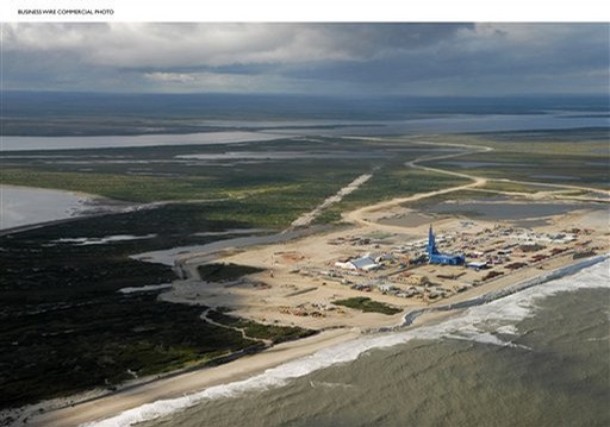
Russia’s Far East Energy Dilemma
Publication: Eurasia Daily Monitor Volume: 6 Issue: 155
By:

The Russian government began insisting in late July that gas from the Sakhalin-1 project must not be sold to China by its partners, including ExxonMobil, but instead diverted to meet the growing demand in Russia’s Far East provinces. Many observers were shocked by what they believed was yet another underhanded move by the Russian authorities to unilaterally break existing contracts (www.jamestown.org/blog, August 4).
While the final results of this conflict have not been decided, if Russia gets its way, the contracts will indeed be broken, but a greater share of the blame for this should also be shouldered by Russia’s Western partners in Sakhalin-1 -who failed to understand the energy crunch faced by Russian industry in the Far East and the unstable political situation in the region. ExxonMobil and others failed to realize that without cheap gas from Sakhalin Moscow was likely to face a full-scale rebellion in its most strategically important region.
The seminal document outlining Russia’s energy goals, "Russia’s Energy Strategy for the period up to 2020" openly stated:
"The Energy Strategy takes into account the main differences of the conditions of energy supply and the structure of fuel-energy balances of… Russian macro regions…The priority in the development of energy is given to the regions with the highest cost of energy sources and their low security (the Far East, Baykal region, North Caucasus, Kaliningrad region, Altai region, etc)" (Russia’s Energy Strategy for the period up to 2020).
This should have alerted Western companies that the Russian Far East was in dire need of gas if it were to develop and the most convenient source was Sakhalin.
Speaking at the annual oil and gas conference in the island’s capital of Yuzhno-Sakhalinsk Vladimir Kozlov, the head of Gazprom’s Sakhalin office, said that the growing demand for gas in Russia’s four far eastern regions would reach 13 billion cubic meters (bcm) by 2010 and further grow to 16 bcm and 19 bcm by 2015 and 2020, respectively (www.ruscham.com, www.jamestown.org/blog, August 4).
One 2005 study by OOO Niigazekonomika, Gazprom’s Research Institute, using data from Gazprom and Russian energy ministry information concluded that Russian domestic gas consumption was rising faster than projected in the "Energy Strategy of Russia to 2020" and by 2030 is expected to be approximately 654 bcm instead of the earlier estimate of 436 bcm. Despite this readily available information, ExxonMobil and other companies involved in the Sakhalin project appear to have ignored it – or did not bother to thoroughly research the problem, and hastily signed sales contracts with China for Sakhalin-1 gas.
Valery Nesterov, an analyst at Troika Dialog, said that despite a growing belief among investors that the government’s grip over resources is easing after deals with Total and Shell in recent months, foreign firms will often remain under pressure. "ExxonMobil does not have a free choice. Past experience shows that if [Moscow] has a strong desire, the foreign partner has to agree," he said. The Khabarovsk-Vladivostok pipeline will run 1,460 kilometers. Nesterov estimates its cost at $2.9 billion to $4.4 billion. Linking Sakhalin Island’s gas resources to Vladivostok is an important priority for the Russian government which wants to maintain control over this important commercial and geopolitical center -a city which has been at the center of numerous anti-government demonstrations this year. These anti-government demonstrations have spread to such cities as Togliatti where automobile workers from the Avto VAZ plant recently staged a brief strike protesting against planned job cuts (www.labornotes.org, August 1). The Avto VAZ plant is the largest auto manufacturing plant in Russia, employing over 112,000 workers in three workshops in the plant. On August 1, workers at Avto VAZ called a strike in response to having received no reply from the company regarding their demands. The union called an end to the strike after four hours at several Avto VAZ shops (www.labornotes.org, August 1).
The Kremlin, however, understands the importance of the Russian Far East and will not hesitate to meets its energy needs at China’s expense in order to insure loyalty and peace in these four regions. On July 24, 2008 the Kremlin dispatched Deputy Prime Minister Igor Sechin to China in order to boost bilateral energy ties. Sechin reportedly reassured Chinese Premier Wen Jiabao that Russia was ready to work with China to fulfill bilateral agreements, and develop energy cooperation. Sechin also delivered a letter from Putin to Wen.
On July 26, Sechin and China’s Vice-Premier Wang Qishan initiated a "negotiation mechanism." Energy cooperation plays an important role in strategic cooperation between China and Russia, Wang said. "The launch of such a mechanism indicates that the China-Russia energy cooperation has entered into a new phase," Wen Jiabao reportedly commented. He also encouraged more progress in crude oil trade, joint development of new deposits, construction of oil and gas pipelines, as well as refining and chemical production facilities (Interfax, RIA-Novosti, Xinhua, July 26-27).
The diversion of Sakhalin gas contracted by China from Sakhalin-1 to the Russian Far East will undoubtedly upset the Chinese leadership – which appears to be frustrated by Russian behavior – and undermine the highly touted "Russian-Chinese strategic alliance" which Putin has actively promoted. It is possible that a conflict over gas supplies in the Russian Far East might turn against Russia and improve Sino-U.S. relations.




